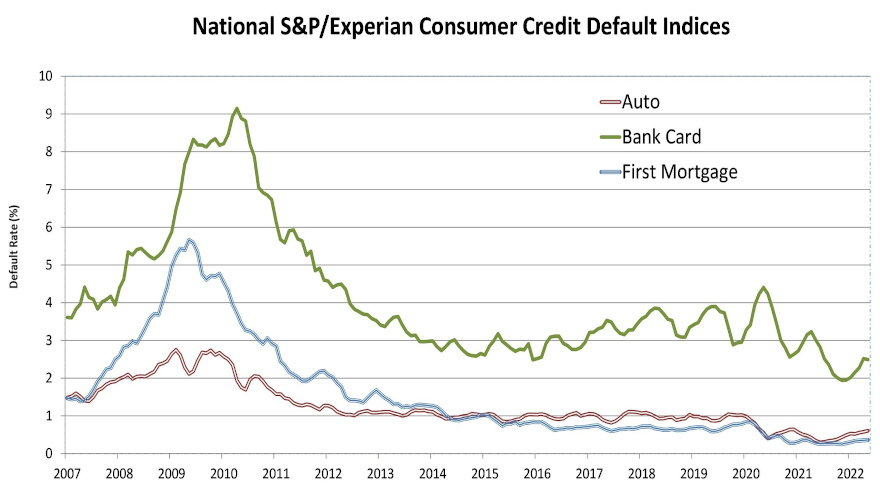Auto defaults up 10 of the past 11 months

Chart courtesy of S&P Dow Jones Indices and Experian.
By subscribing, you agree to receive communications from Auto Remarketing and our partners in accordance with our Privacy Policy. We may share your information with select partners and sponsors who may contact you about their products and services. You may unsubscribe at any time.
While not at the upward pace of headline-grabbing metrics such as inflation or gas prices, nonetheless auto defaults are moving higher.
And they have been now for 10 of the past 11 months.
According to data through May 2022 for the S&P/Experian Consumer Credit Default Indices, analysts determined the latest auto default rate came in at 0.61%. The latest reading is 31 basis points higher than the all-time low that S&P Dow Jones Indices and Experian reported last June. That’s when it fell to 0.30%.
For collections and recoveries professional looking for when there might be normalization again in the default department, the gradual climb is getting this metric back closer to reading seen before the pandemic.
Looking back at S&P Dow Jones Indices and Experian data from the past five years, the high points during that span happened in October and November 2017 when the readings stood at 1.11%.
From May 2017 through January 2020, the auto default rate was at least 0.82%, according to the S&P Dow Jones Indices and Experian database.
Subscribe to Auto Remarketing to stay informed and stay ahead.
By subscribing, you agree to receive communications from Auto Remarketing and our partners in accordance with our Privacy Policy. We may share your information with select partners and sponsors who may contact you about their products and services. You may unsubscribe at any time.
Returning to the newest information, analysts said the composite rate — which represents a comprehensive measure of changes in consumer credit defaults — rose 1 basis point to 0.51%, marking the sixth month in a row the metric moved higher and placing it at the highest point since March of last year.
Elsewhere in the credit world, S&P Dow Jones Indices and Experian reported that the bank card default rate fell 3 basis points to 2.49%, while the first mortgage default rate was up 1 basis point 0.36%.
Wrapping up the latest update with a glimpse at the five largest metropolitan areas in the U.S., analysts discovered two of them generated higher default rates month-over-month.
According to S&P Dow Jones Indices and Experian, Los Angeles had the largest increase, climbing 7 basis points to 0.45%. Miami rose four basis points to 0.84% while New York dropped one basis point to 0.77%.
Analysts added that Chicago and Dallas were both unchanged at 0.53% and 0.52%, respectively.
Jointly developed by S&P Indices and Experian, analysts noted the S&P/Experian Consumer Credit Default Indices are published monthly with the intent to accurately track the default experience of consumer balances in four key loan categories: auto, bankcard, first mortgage lien and second mortgage lien.
The indices are calculated based on data extracted from Experian’s consumer credit database. This database is populated with individual consumer loan and payment data submitted by lenders to Experian every month.
Experian’s base of data contributors includes leading banks and mortgage companies and covers approximately $11 trillion in outstanding loans sourced from 11,500 lenders.


